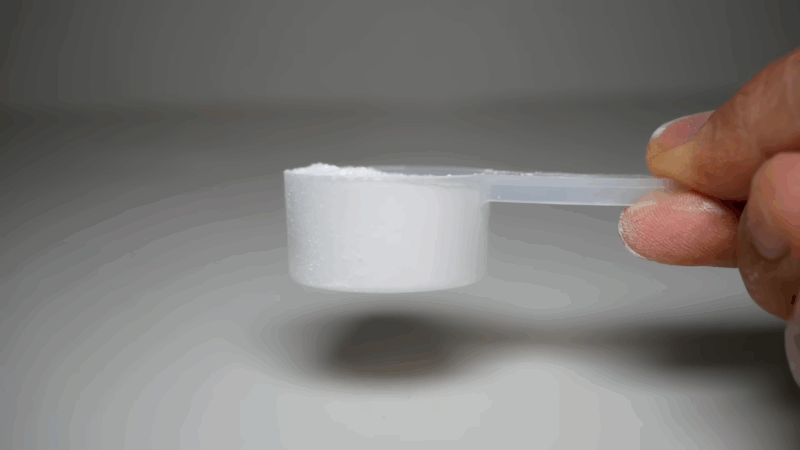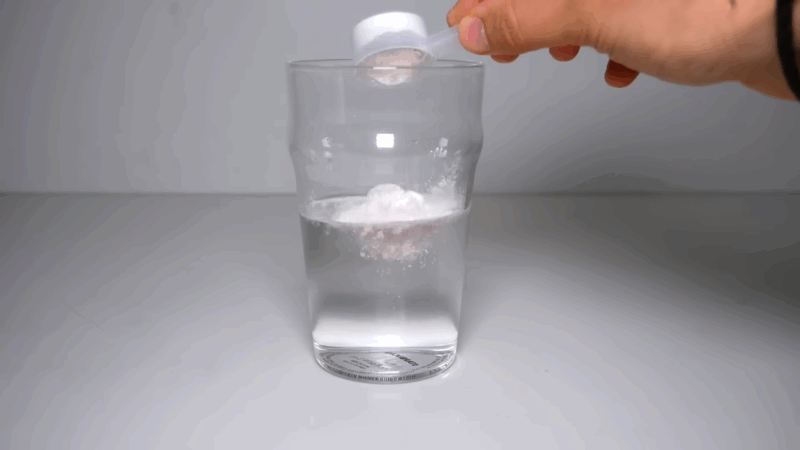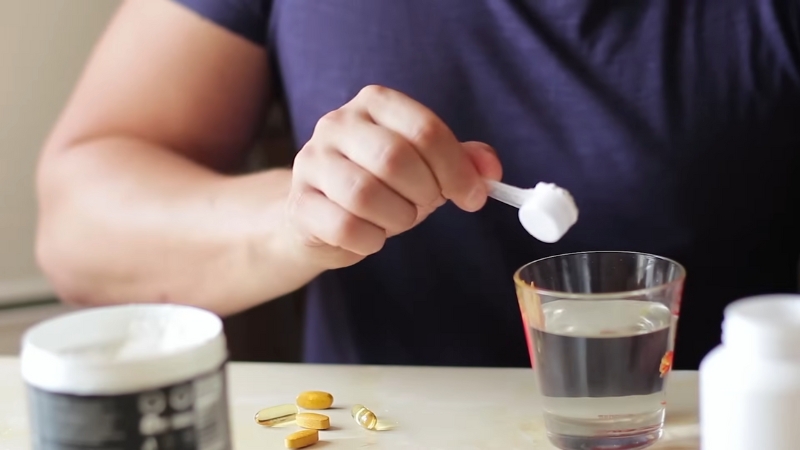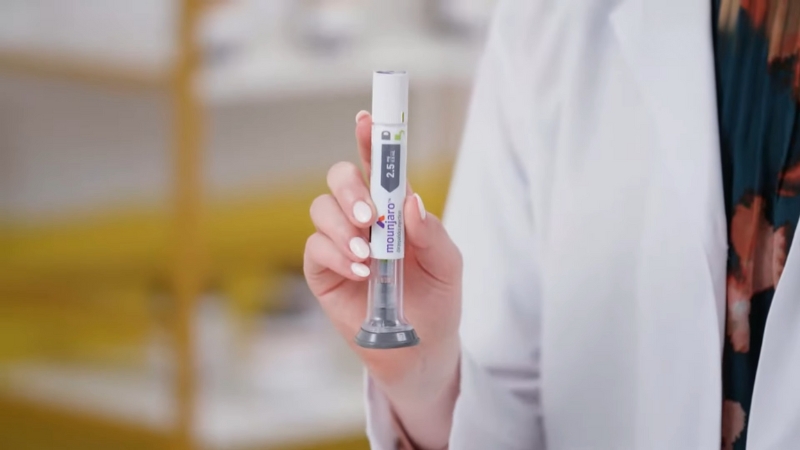
Share Post:
Let’s cut to it: if you can’t even think about hitting the gym without tossing back a scoop of pre-workout, it might be time to ask yourself, Are you relying on it a little too much?
Pre-workout supplements can be helpful. No shame there. They can boost focus, energy, and give you that kick to crush a workout. But when your shaker bottle feels more like a security blanket than a tool, something’s up.
You’re not alone if you’ve started to feel like your workouts (or maybe even your day) can’t start without that sour watermelon buzz. The mix of caffeine, stimulants, and feel-good additives is designed to pump you up. But for some people, it stops being a boost and starts being a crutch.
So let’s talk about it, what pre-workout dependence looks like, how to spot the signs, what’s going on in your body and brain, and how to reset if needed. No scare tactics. No shame. Just the real talk you’d want from someone who gets it.
What’s Actually in Your Pre-Workout?

Before pointing fingers at bad habits, it helps to know what we’re dealing with.
Most pre-workouts contain a blend of the following:
| Ingredient | What It Does |
| Caffeine | Central nervous system stimulant. Boosts alertness, energy, and mood. Most formulas range from 150–400mg. That’s like 2–4 cups of coffee. |
| Beta-Alanine | Gives that tingly, itchy sensation. Buffers muscle acidity — helps delay fatigue. |
| Creatine | It supports muscular strength and recovery (though it works better when taken consistently, not just pre-workout). |
| L-Citrulline or Arginine | Improves blood flow (aka “the pump”) by boosting nitric oxide. |
| Tyrosine or other nootropics | Boosts focus, reaction time. Sometimes paired with stimulants. |
| Artificial flavors/sweeteners | For taste. Often heavy on sucralose or acesulfame potassium. |
Some are clean and simple. Others look more like a chemistry set. Either way, it’s not hard to see how you could start craving the effects, or even feeling like you need them.
Addiction vs. Dependence vs. Habit: What’s the Difference?
Let’s not get too clinical here, but it helps to sort out the difference between having a “habit,” being “dependent,” or having an “addiction.”
- Habit: You like your pre-workout. You use it before the gym. But if you skip it, you’re fine. Maybe a little slower, but no meltdown.
- Dependence: You’ve used it so often that your body expects it. Without it, you feel off — maybe you’re more tired, irritable, or unfocused. Withdrawal symptoms (like headaches or fatigue) might pop up.
- Addiction: You feel compelled to take it. You might try to cut back and fail. You may even experience anxiety or panic without it, or keep using despite sleep issues or heart palpitations.
Sound familiar?
Addiction isn’t just about the substance, it’s about how you relate to it. If your whole routine, mood, or self-worth gets tangled up in a scoop of neon powder, that’s worth paying attention to.
Red Flags You Might Be Hooked
View this post on InstagramA post shared by Akash Gupta | Online Trainer & Nutritionist (@getfitwithakashgupta)
Let’s break down some common warning signs. Not to shame you — just to check in honestly.
1. You Skip the Gym If You Don’t Have Pre
No pre, no workout. Not because you’re tired, but because it feels impossible without it. You could have time, energy, and motivation… but mentally, you’re just not “ready” without your usual buzz.
That’s not just routine. That’s psychological dependence.
2. You’re Doubling Up — or Not Measuring at All
If one scoop is good, two must be better, right? Until your heart feels like it’s breakdancing and you’re sweating during warm-up.
Taking more than the recommended dose, “dry scooping” (yep, people do this), or mixing with other stimulants (like energy drinks or extra caffeine) can be risky — and often signals tolerance or over-reliance.
3. You Feel Withdrawn Without It
Skipping pre doesn’t just make you feel a little sleepy, it makes you feel awful. Headaches, irritability, low energy, even a bit of brain fog. That’s not laziness. That’s withdrawal.
And it’s more common than you’d think, especially with higher-caffeine blends.
4. You’ve Stopped Sleeping Well

High-stim pre-workouts can stick around in your system for 4–6 hours or more. If you’re taking it in the late afternoon or early evening and you’re tossing and turning at night, that’s a clear sign it’s affecting your sleep.
And poor sleep equals lower recovery, worse workouts, and ironically… more need for pre-workout. Vicious cycle.
5. You’re Ignoring Physical Symptoms
Rapid heartbeat, jitters, nausea, shakiness, these aren’t “just part of the grind.” Your body is trying to tell you it’s overstimulated.
If you keep pushing through those signs or chalking them up as normal, that’s a problem.
6. You’re Anxious or Moody Without It
Caffeine hits your dopamine and adenosine receptors; in short, it lifts your mood and delays fatigue. But when it wears off, you crash.
If you’re feeling flat, anxious, or edgy on non-training days, your brain chemistry may be riding a caffeine rollercoaster.
Who’s Most at Risk?

Not everyone who uses pre-workout ends up dependent. But some groups are more likely to fall into the trap:
- Younger lifters: Especially late teens to early 20s, brains are still developing, and there’s more peer pressure to hit PRs, look pumped, or chase energy highs.
- High-stress lifestyles: If you’re burning the candle at both ends (work, study, gym, repeat), pre-workout can become a lifeline.
- People with restrictive diets: If you’re under-eating carbs or not sleeping enough, stimulants become a way to fake energy, which backfires long-term.
- Anyone chasing aesthetic changes fast: If your workouts feel like all-or-nothing, you might feel like pre-workout is the only way to make progress.
The Tolerance Trap
Your body’s smart. Use caffeine and stimulants regularly, and your system adapts. That initial surge of energy you used to get from one scoop? Fades.
You may end up chasing that same feeling with larger doses, new brands, or stronger blends, especially those with “underground” ingredients. Some contain banned or sketchy compounds under vague names like “proprietary blends.” Not great.
Eventually, your body hits a wall: you don’t get the benefits, but you still feel the crash. That’s classic tolerance, and it can spiral quickly if unchecked.
How to Reset Your Relationship With Pre-Workout
You don’t have to go cold turkey forever. But taking a step back can help your body and brain reset. Here’s how to make it manageable:
1. Take a “Stimulant Deload”
Try cutting out all stimulants (pre-workout, coffee, energy drinks) for 1–2 weeks. Your first few days might feel rough — headaches, low energy, bad mood, but by week two, most people feel noticeably more balanced.
Hot tip: do it during a deload week from lifting or when life’s less hectic.
2. Swap in Non-Stim Options
If you still want a little pump and focus, look for stimulant-free pre-workouts. They skip the caffeine but include ingredients like citrulline, creatine, beta-alanine, or nootropics. You’ll still feel something, just not the weird buzz.
3. Check Your Sleep and Diet
If you’re always tired, ask why. Are you getting 7–9 hours of quality sleep? Eating enough carbs and protein? Drinking enough water?
Energy starts with the basics; pre-workout can’t fix a tank that’s already empty.
4. Set Boundaries for Use
Instead of taking it every session, try limiting it to 2–3 times per week — maybe on heavy lifts or long training days. It keeps tolerance low and gives your body a break.
When It’s More Than Just Pre-Workout

Sometimes the issue isn’t just the supplement, it’s what’s underneath.
If you’re struggling with body image, anxiety, burnout, or obsessive training behaviors, pre-workout might just be one piece of the puzzle. No shame in that, but it might be worth talking to someone who can help you unpack it.
Your physical and mental health are tightly connected. One affects the other. And if you’re using a supplement to mask stress, anxiety, or low self-worth, you’re not alone, but you also don’t have to stay stuck.
In those cases, the issue might go beyond fitness culture or gym habits. It might fall into the realm of substance use and emotional regulation, areas where professional help can be genuinely life-changing.
If you or someone you know is dealing with that kind of cycle and needs more structured support, there are real options out there. Programs like drug rehab Houston offer medically-informed care for people facing substance dependence, including situations that start with legal stimulants or supplements and gradually escalate.
Final Thoughts: You’re Not Weak for Taking a Break
There’s no badge of honor in white-knuckling your way through stimulant use just to prove how hardcore you are. It’s not weakness to pull back — it’s maturity.
Fitness isn’t about how jacked you look mid-pump — it’s about building habits that support long-term performance, health, and stability.
So, if your canister of pre-workout has started to feel more like a lifeline than a tool, take a breath. Take a break. You might be surprised how much strength you’ve still got — no powder required.
Related Posts:
- Is It Time to Expand Your Gym? Signs You’re Ready to Grow
- 8 Signs Your Body Needs More Than a Multivitamin
- Is Your Workout Causing Your Acne? Here's How to Stop It
- Is Your Prescription Interfering With Your Fitness Goals?
- How to Monitor and Adjust Your Fitness Routine as You Age
- Can You Really Sculpt Your Face with Exercise?










